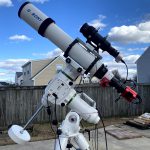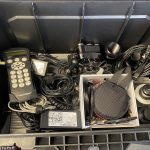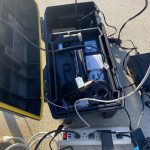
If you are into amateur visual astronomy, astrophotography, or EAA you likely have a telescope, a mount, finder scopes, cameras or eyepieces, and a plethora of other astronomy gear dedicated to observing. There are a number of other things you should look to collect to keep in your kit to help you get the most out of your observing sessions. In this post I talk about five “not really astronomy things” which I keep in my gear box to help get the most out of my gear and my observing sessions. A couple of these are also pretty good ideas for gifts for someone into amateur astronomy (Christmas is right around the corner).
#1: A log book, I use these composition notebooks. I wrote a post about how I log my observing sessions here. Regardless of where you are in your amateur astronomy hobby journey… KEEP A LOG!

Keep a log of the gear you use, the weather conditions, what you observe, issues you encountered, how you over came issues you encountered, things that worked well, and the like. There are other options beyond writing things down in a notebook, I just find it a bit easier to handwrite notes while observing. It doesn’t matter what you use just get in the habit of keeping a log of your observing session. I promise keeping a log will help you further advance and enjoy the hobby.
There are also purpose built dedicated astronomy log books available with lots of different layouts options for recording observations. I dig these composition notebooks with a vintage astronomy related cover. These astronomy themed notebooks would make a great gift for sure!
#2: Hook and Loop Wire Ties and Hook and Loop adhesive strips. These are great for organizing cables for cable management and for attaching things to the mount, tripod, or scope.

If you are doing EAA or astrophotography there can be a mess of cables. The cameras, focusers, filter wheels, dew heaters, and mount all require cables for connectivity and some of these may also require their own connections for power. Hook and Loop Wire Ties can help keep all of this organized and help keep cables out of the way so they do not impact the operation of the mount.
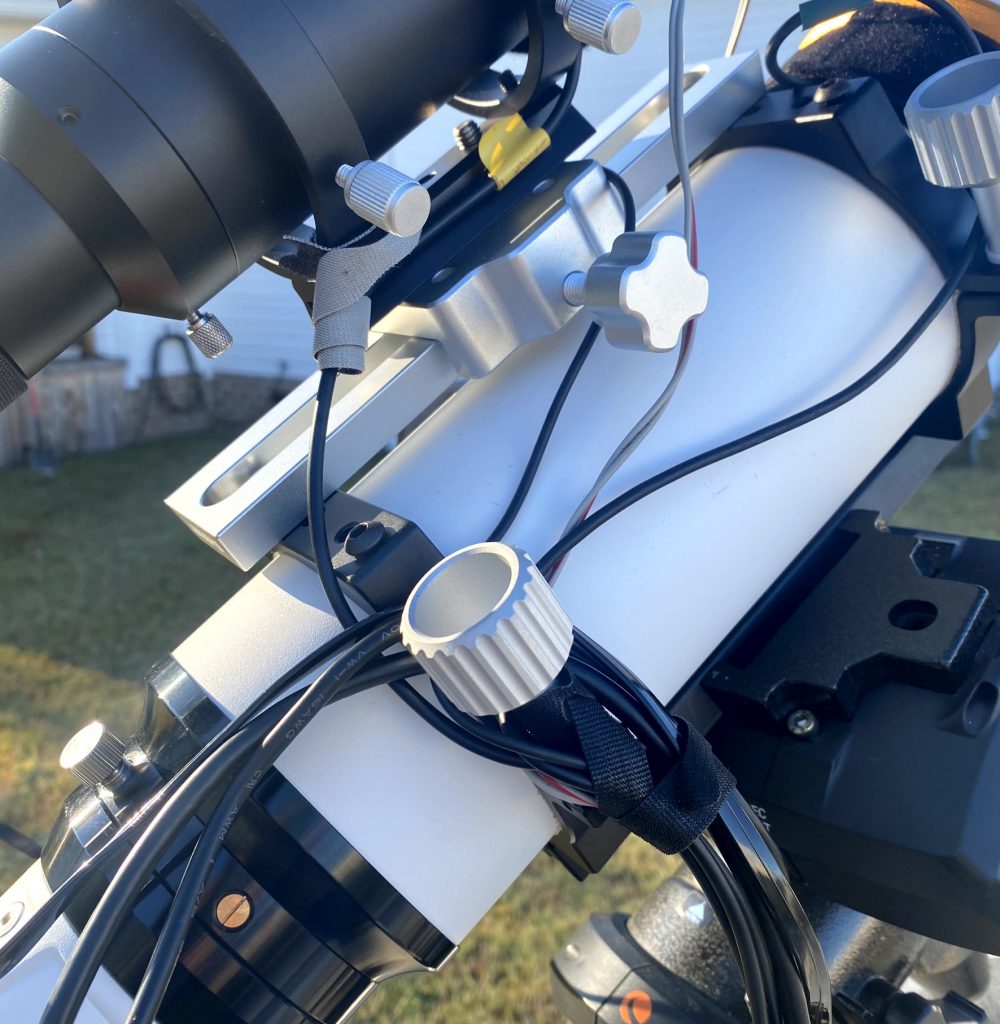
These cable ties also make it easy keep cables wrapped up and organized when storing them. Hook and Loop adhesive strips are also handy for attaching things, like a dew heater controller, a Raspberry Pi, or a USB hub, to the tripod or telescope to help with cable management.
#3: A spirit Level for leveling the mount, finding your mounts home position, and other tasks which require equipment to be leveled.

Most mounts have some kind of level built in, usually a bubble level in the base of the mount. This bubble level usually works OK but having an independent level can provide a little more accuracy. A level mount and an accurate home position will improve tracking and accuracy of GoTo slews.
#4: A Lens Brush Kit, one that includes a blower brush. These are handy for removing dust from filters, camera sensor glass, eyepieces, or even your telescope objective lenses.
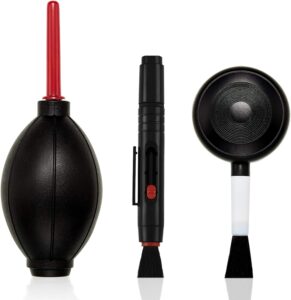
I am not talking about cleaning the glass here, that rarely needs to be done and will likely require some different equipment. This is for gently removing visible specks of dust from different components. The blower brush can be used to gently blow and sweep away dust, eyelashes, beard hair, or other foreign objects off of objectives. These brushes are also useful for keeping the exterior areas of the scope dust free. I will often use the lens blower brush to dust off the area around a component, for example around the telescope lens cap, before removing it – the less dust around the less of a possibility it ends up in your image train.
If you are looking for a gift this cleaning kit from Celestron is pretty nice.

The Celestron kit comes in a storage pouch which has room to add the lens brush kit above to have a really nice field lens maintenance kit.
#5: A simple tool kit with Allen wrenches, a small Phillips head screwdriver, and a small flathead screwdriver. On most mounts there are a number of different screws and grub screws which are used to adjust tension, gear backlash, and the like. These are not things you will necessarily need to tinker with very often but it is good to have the tools you need to do so as part of your kit. The tools you need will likely depend on your mount and accessories. For my Celestron Advanced GT CG5, this Allen wrench set has the sizes I need.

For screwdrivers I prefer a dedicated #2 Phillips head screwdriver and dedicated flat head screwdriver as opposed to a driver with different bits, bits are small and easy to drop and hard to find in the dark. I also keep a bunch of spare screws and bolts with my kit, things to replace fasteners on stuff like rings, focus locks, dovetail attachments, etc. It’s handy to have some extras on hand incase you drop something in the dark. If you are like me, you want to spend your time observing not searching in the dark for a small screw in tall grass. The spare screws and bolts you keep in your kit will depend on your gear, so just pick these pieces and parts up as you learn what you may need (or wish you had).
I know I said 5 things, but I have to mention one more…
#6 A storage box or some way to keep all the gear you regularly use organized, protected, readily accessible, and easy to transport. I wrote a post about the storage box system I use to store and organize my EAA gear here. I have been using this storage system to store and transport my EAA gear for several months now and it has worked out great.
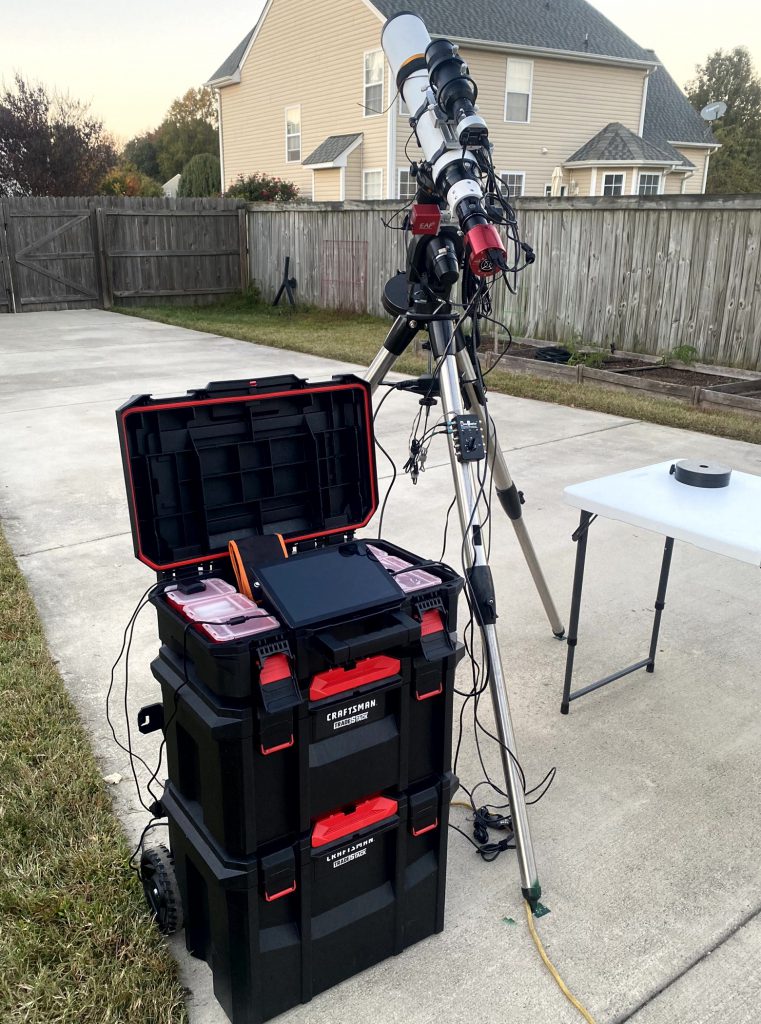
I can easily roll it out to my observing area and have everything I need, including all the things mentioned above (which I keep in the top box), for my observing sessions.
These are things I would not want to be without. Each of these things help make observing trouble-free and more enjoyable. There are probably a few other things which may be useful as well depending on the type of observing you do or your specific gear.
What are things that you keep in your kit which you find useful?
Share the “not really an astronomy things” you have in your kit and how it helps with your sessions or gear maintenance. Just drop a note in the comments.


